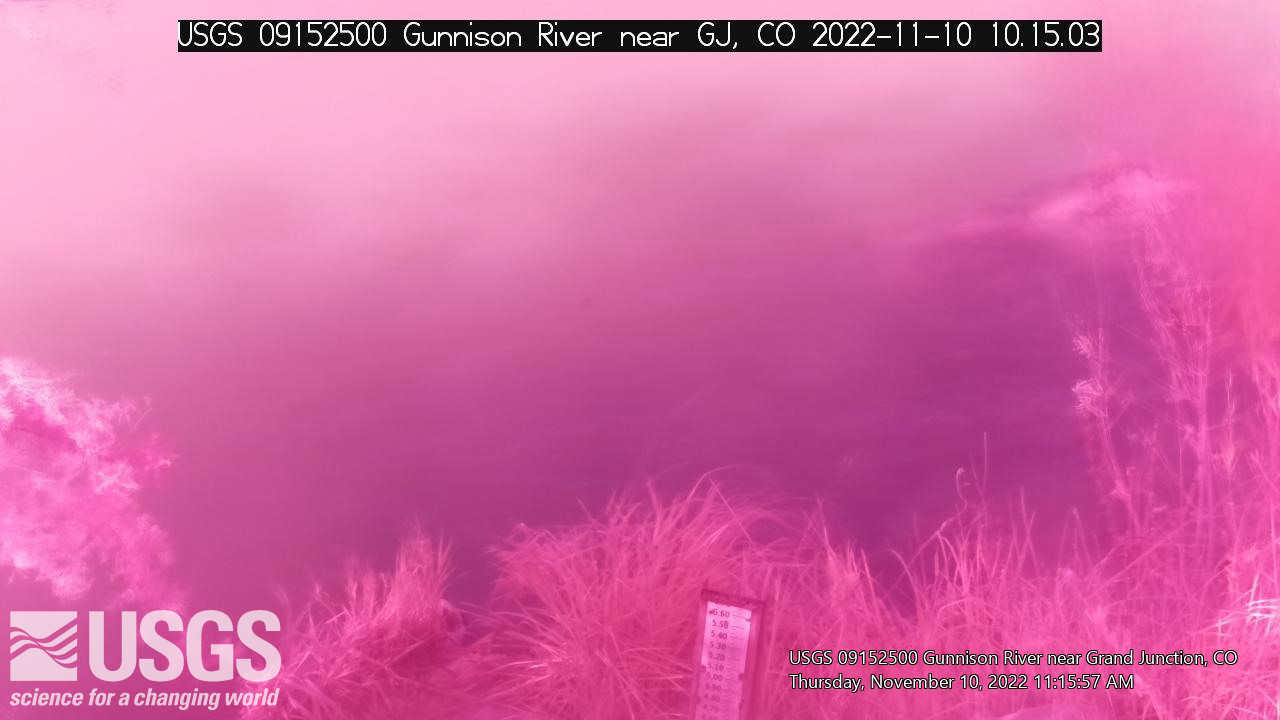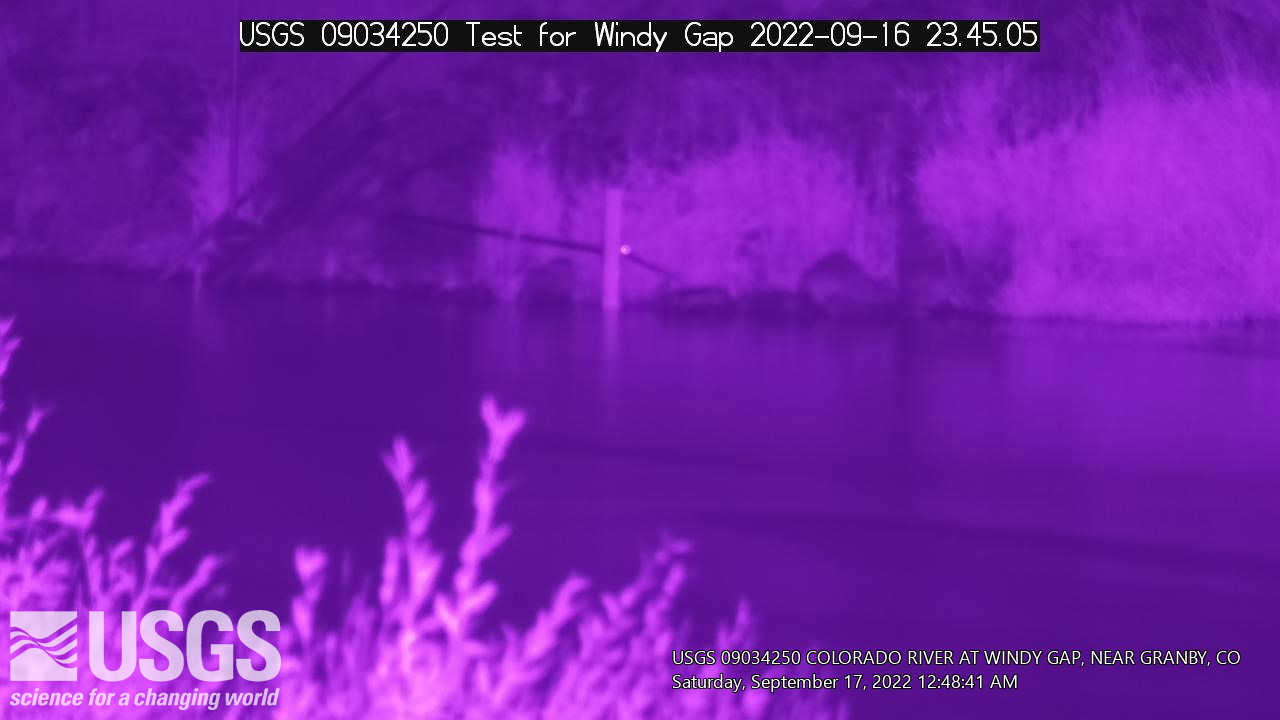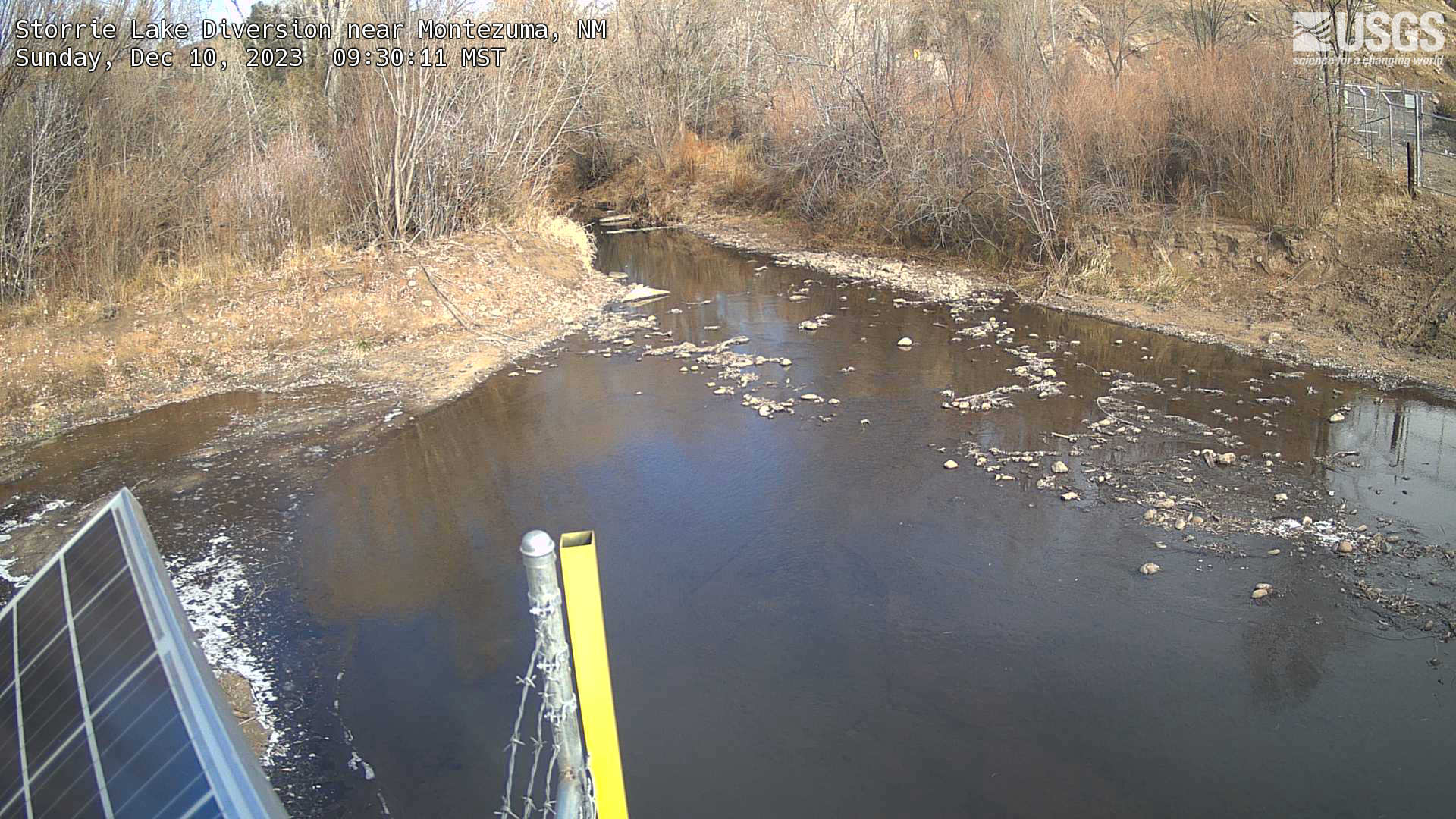This is a webcam image of Storrie Lake Diversion nr Montezuma, NM downstream of Hermits Peak and Calf Canyon Fire
All Multimedia
Access all multimedia to include images, video, audio, webcams, before-after imagery, and more. Filter and explore with filtering options to refine search.
This is a webcam image of Storrie Lake Diversion nr Montezuma, NM downstream of Hermits Peak and Calf Canyon Fire
 Timelapse showing rise of Halema‘uma‘u crater floor
Timelapse showing rise of Halema‘uma‘u crater floor
This timelapse sequence shows activity in Halema‘uma‘u, at the summit of Kīlauea, from March to August. The video shows the rise of the crater floor due to lava supplied beneath the surface crust, lifting the crater floor in an "endogenous" process. In addition, lava flows erupt sporadically and resurface portions of the crater floor.
This timelapse sequence shows activity in Halema‘uma‘u, at the summit of Kīlauea, from March to August. The video shows the rise of the crater floor due to lava supplied beneath the surface crust, lifting the crater floor in an "endogenous" process. In addition, lava flows erupt sporadically and resurface portions of the crater floor.
 Monthly update of activity at Yellowstone Volcano for August 1, 2022 from Mammoth Hot Springs
Monthly update of activity at Yellowstone Volcano for August 1, 2022 from Mammoth Hot Springs
Mike Poland, scientist-in-charge of the Yellowstone Volcano Observatory, describes activity at Yellowstone in this monthly update for August 1, 2022.
Mike Poland, scientist-in-charge of the Yellowstone Volcano Observatory, describes activity at Yellowstone in this monthly update for August 1, 2022.
 PubTalk-07/2022 - Mapping the World from Satellites
PubTalk-07/2022 - Mapping the World from Satellites
Mapping the World from Satellites Helping us understand Global Food & Water Security in the 21st Century
by USGS Research Geographer Prasad Thenkabail
Mapping the World from Satellites Helping us understand Global Food & Water Security in the 21st Century
by USGS Research Geographer Prasad Thenkabail

Assessment of Per- and Polyfluoroalkyl Substances (PFAS) in West Virginia Public Source-Water Supplies
linkWhat are PFAS?


The Landsat archive at EROS contains an unparalleled 50 years of Earth observation data. But with earlier technologies, some Landsat scenes were collected and stored only by international ground receiving stations rather than in the central archive at EROS.
The Landsat archive at EROS contains an unparalleled 50 years of Earth observation data. But with earlier technologies, some Landsat scenes were collected and stored only by international ground receiving stations rather than in the central archive at EROS.

Webcam at USGS Streamgage 09152500 Gunnison River near Grand Junction, CO.
Visit Water Data For the Nation to get current data for this site.
Webcam at USGS Streamgage 09152500 Gunnison River near Grand Junction, CO.
Visit Water Data For the Nation to get current data for this site.

Webcam at USGS Streamgage 09034250 Colorado River at Windy Gap near Granby, CO.
Visit Water Data For the Nation to get current data for this site.
Webcam at USGS Streamgage 09034250 Colorado River at Windy Gap near Granby, CO.
Visit Water Data For the Nation to get current data for this site.
Government officials and scientists had high hopes for Landsat when the first experimental satellite launched July 23, 1972. Those hopes were soon realized when imagery came back depicting features never before seen. Since then, an archive of imagery surpassing 10 million scenes has amassed at EROS, collected from eight different Landsat satellites.
Government officials and scientists had high hopes for Landsat when the first experimental satellite launched July 23, 1972. Those hopes were soon realized when imagery came back depicting features never before seen. Since then, an archive of imagery surpassing 10 million scenes has amassed at EROS, collected from eight different Landsat satellites.
 Reducción de los riesgos de inundación mediante la restauración de los arrecifes de coral
Reducción de los riesgos de inundación mediante la restauración de los arrecifes de coral
El aumento de riesgos por inundaciones a lo largo de nuestras costas está causado por el cambio climático, el desarrollo urbano y la pérdida de hábitat.
El aumento de riesgos por inundaciones a lo largo de nuestras costas está causado por el cambio climático, el desarrollo urbano y la pérdida de hábitat.
Coral reefs are important for supporting biodiversity, fisheries, tourism, and coastal protection, but are in decline worldwide, primarily due to extreme heat waves and subsequent coral bleaching, in addition to other stressors.
Coral reefs are important for supporting biodiversity, fisheries, tourism, and coastal protection, but are in decline worldwide, primarily due to extreme heat waves and subsequent coral bleaching, in addition to other stressors.
The complex, three-dimensional reefs built by corals over hundreds to thousands of years provide invaluable ecosystem services to society—contributing billions of dollars per year to the global economy through shoreline protection, tourism, and habitat for biodiversity and fisheries.
The complex, three-dimensional reefs built by corals over hundreds to thousands of years provide invaluable ecosystem services to society—contributing billions of dollars per year to the global economy through shoreline protection, tourism, and habitat for biodiversity and fisheries.
 Monthly update of activity at Yellowstone Volcano for July 2022
Monthly update of activity at Yellowstone Volcano for July 2022
Mike Poland, scientist-in-charge of the Yellowstone Volcano Observatory, describes activity at Yellowstone volcano in this monthly update for July 1, 2022.
Mike Poland, scientist-in-charge of the Yellowstone Volcano Observatory, describes activity at Yellowstone volcano in this monthly update for July 1, 2022.
 PubTalk-06/2022 - Keeping Tabs on the Volcanoes of the Last Frontier
PubTalk-06/2022 - Keeping Tabs on the Volcanoes of the Last Frontier
Keeping Tabs on the Volcanoes of the Last Frontier
An Update from the Alaska Volcano Observatory
By Michelle Coombs, USGS Research Geologist
Scientist-in-Charge, Alaska Volcano Observatory
Keeping Tabs on the Volcanoes of the Last Frontier
An Update from the Alaska Volcano Observatory
By Michelle Coombs, USGS Research Geologist
Scientist-in-Charge, Alaska Volcano Observatory
Dr. Christopher G. Smith pumps water from a submarine groundwater well on the seafloor through tubing to the R/V Halimeda and uses an instrument called a YSI to measure salinity and ensure the wells are working properly and producing groundwater.
Dr. Christopher G. Smith pumps water from a submarine groundwater well on the seafloor through tubing to the R/V Halimeda and uses an instrument called a YSI to measure salinity and ensure the wells are working properly and producing groundwater.
Dr. Christopher G. Smith pumps water from a submarine groundwater well on the seafloor through tubing to the R/V Halimeda and uses an instrument called a YSI to measure salinity and ensure the wells are working properly and producing groundwater.
Dr. Christopher G. Smith pumps water from a submarine groundwater well on the seafloor through tubing to the R/V Halimeda and uses an instrument called a YSI to measure salinity and ensure the wells are working properly and producing groundwater.
Dr. Christopher G. Smith pumps water from a submarine groundwater well on the seafloor through tubing to the R/V Halimeda and uses an instrument called a YSI to measure salinity and ensure the wells are working properly and producing groundwater.
Dr. Christopher G. Smith pumps water from a submarine groundwater well on the seafloor through tubing to the R/V Halimeda and uses an instrument called a YSI to measure salinity and ensure the wells are working properly and producing groundwater.
A team from the USGS St. Petersburg Coastal and Marine Science Center heads out into the Gulf of Mexico to check on a set of recently installed groundwater wells. These types of wells allow scientists to monitor submarine groundwater through time and quantify the flux of groundwater from Florida’s aquifer into the coastal waters of the west Florida Shelf.
A team from the USGS St. Petersburg Coastal and Marine Science Center heads out into the Gulf of Mexico to check on a set of recently installed groundwater wells. These types of wells allow scientists to monitor submarine groundwater through time and quantify the flux of groundwater from Florida’s aquifer into the coastal waters of the west Florida Shelf.
We don't need a scientist to tell us that city streets catch and hold heat. Anyone who's walked barefoot from a parking lot to a beach can tell you that. What scientists can help us understand, particularly scientists who work with spaceborne, remotely sensed data, is just how big a difference there is between cities and the countryside.
We don't need a scientist to tell us that city streets catch and hold heat. Anyone who's walked barefoot from a parking lot to a beach can tell you that. What scientists can help us understand, particularly scientists who work with spaceborne, remotely sensed data, is just how big a difference there is between cities and the countryside.
This video acts as a “visual abstract” for a recent publication analyzing the stormwater management practices in Clarksburg, MD. The video features interviews with the team of USGS scientists as well as a water specialist from Montgomery County.
This video acts as a “visual abstract” for a recent publication analyzing the stormwater management practices in Clarksburg, MD. The video features interviews with the team of USGS scientists as well as a water specialist from Montgomery County.
50 years of teamwork. 50 years of innovation. 50 years of resilience. In 1966, Secretary of the Interior Stewart Udall announced his vision to create a program aimed at gathering facts about the natural resources of the Earth from Earth orbiting satellites. It was a bold proclamation. It was also an idea that worked and continues to work 50 years on.
50 years of teamwork. 50 years of innovation. 50 years of resilience. In 1966, Secretary of the Interior Stewart Udall announced his vision to create a program aimed at gathering facts about the natural resources of the Earth from Earth orbiting satellites. It was a bold proclamation. It was also an idea that worked and continues to work 50 years on.











